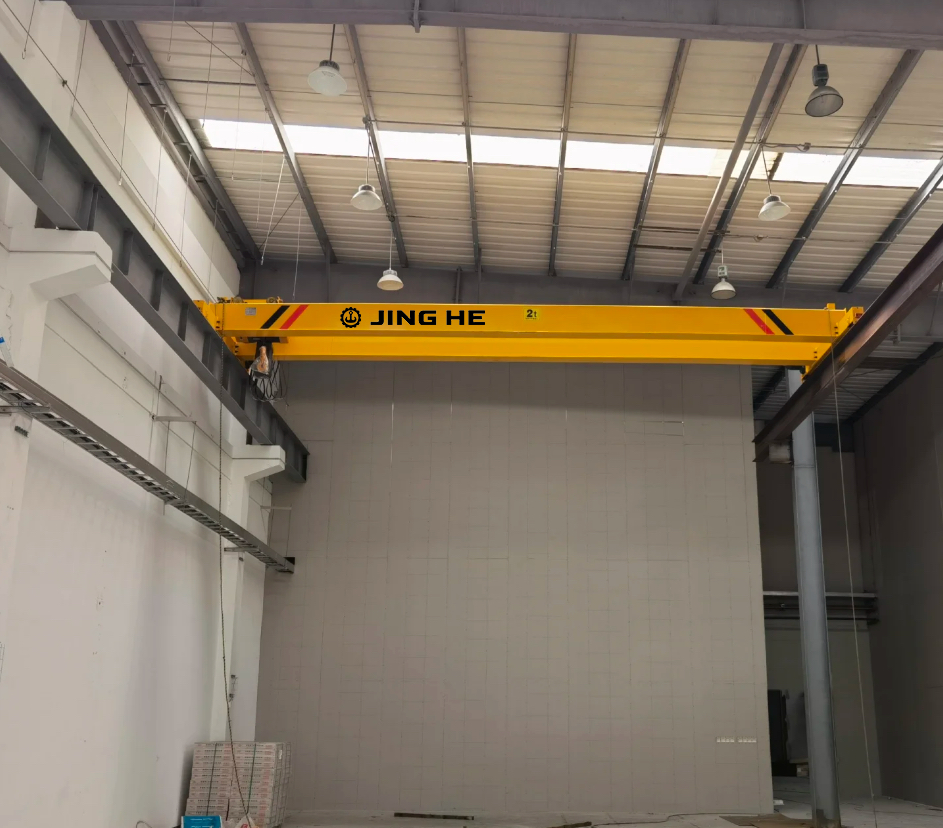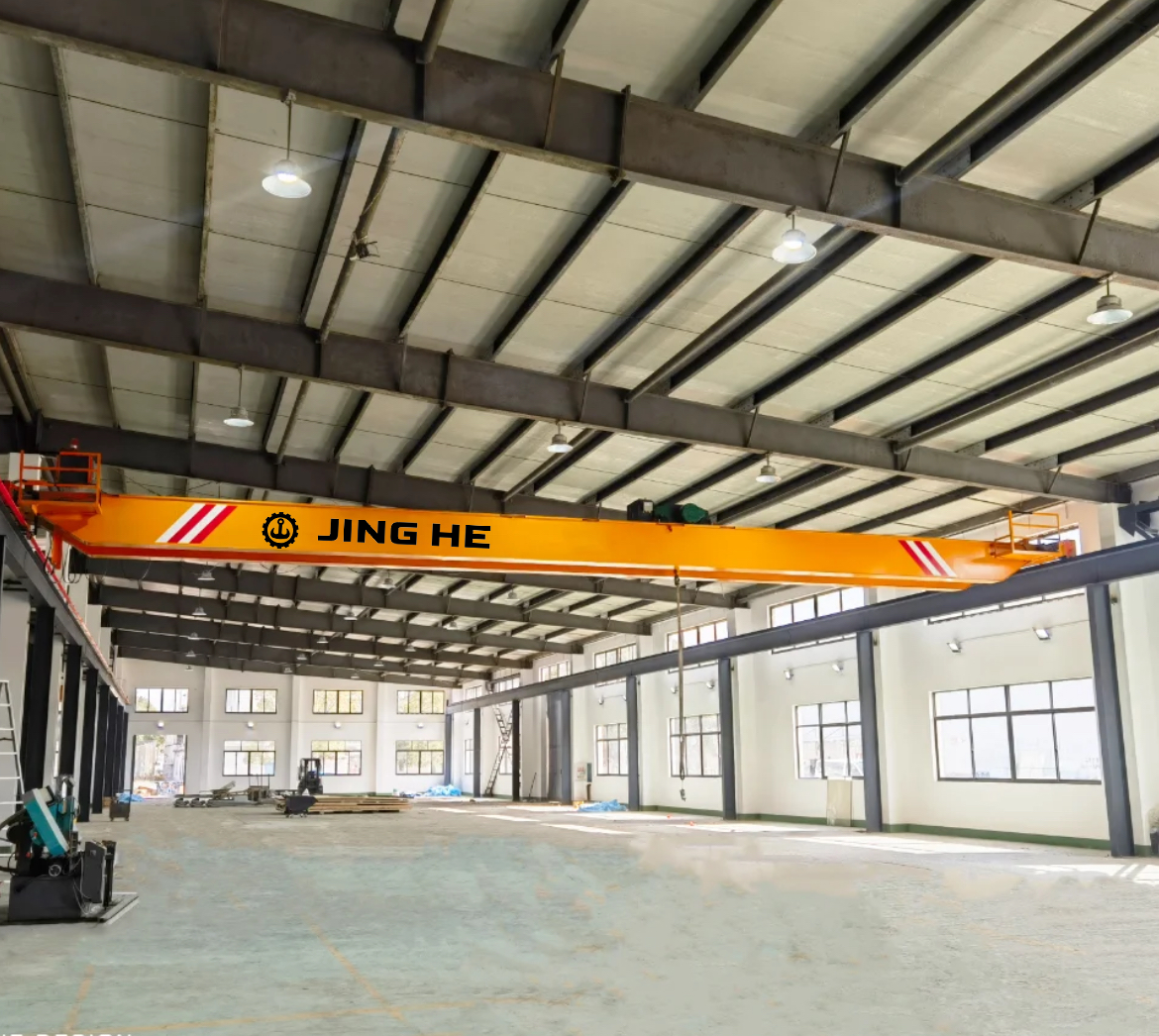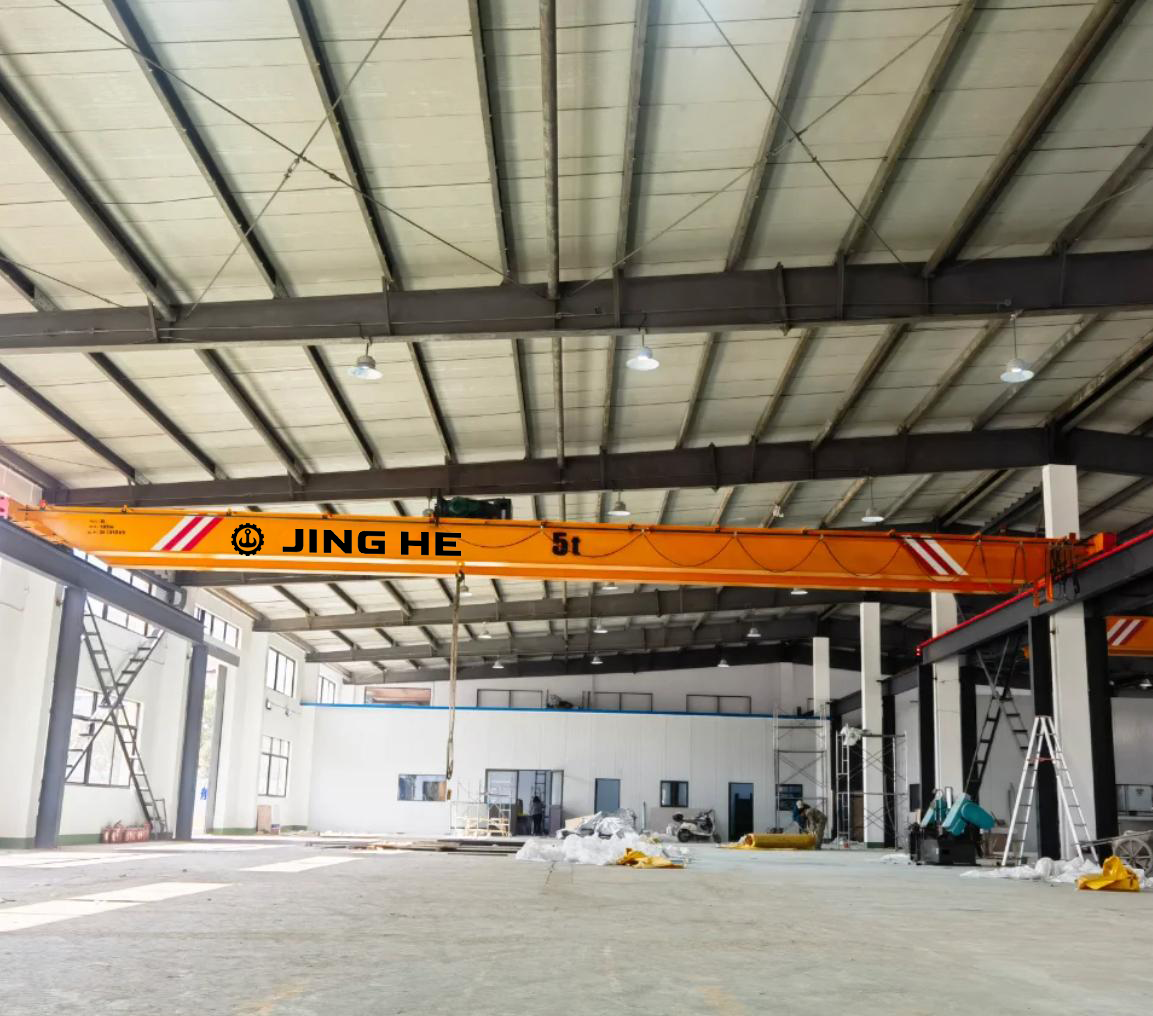Technical structure and design innovation of LH electric hoist crane
1. Analysis of the technical architecture of LH electric hoist crane
①Composite box beam structure system
Jinghe crane adopts a straight track/off-track composite box beam design. Through finite element topology optimization technology, the cross-sectional stiffness of the main beam is increased by 40%. Q235-B steel is combined with laser cutting and blanking technology to ensure the structural stability of the minimum plate thickness of 6mm. The original corrugated web technology reduces the deadweight of the main beam by 15%, while the dynamic deflection is controlled within L/1000, meeting the European FEM standard requirements.
②Three-in-one drive system innovation
In terms of drive device, Jinghe breaks through the traditional split structure and develops a modular three-in-one drive assembly. The device integrates a 2.2-22kW variable frequency motor, a hardened gear reducer and an electromagnetic brake unit, with a transmission efficiency of 94%. Through oil bath lubrication technology, 20,000 hours of maintenance-free operation is achieved, which reduces the maintenance cost by 60% compared with traditional structures.
③Intelligent control system upgrade
Equipped with CAN bus communication architecture, integrated load spectrum recording, anti-sway algorithm, adaptive positioning and other intelligent modules. The 10-inch HMI human-machine interface supports multi-touch operation, and the 0.5mm positioning accuracy reaches the military standard. Through the industrial Internet of Things gateway, remote monitoring and preventive maintenance of equipment status can be achieved.

2. Breakthrough design innovation and application practice
①Low clearance solution
For scenes with limited plant height, Jinghe R&D team has pioneered the "Z-type" track layout technology. Through the side installation of electric hoists and compact end beam design, the building clearance requirement is successfully reduced by 1.2 meters. This technology has been applied in a domestic automobile welding workshop, saving 8 million yuan in investment in the renovation of old factories.
②Modular rapid deployment system
Adopting high-strength bolt flange connection technology, the main beam segment length is optimized to a standard module of 6-12 meters. The on-site assembly time is shortened to 1/3 of the traditional structure, which is particularly suitable for special environments such as clean workshops. A semiconductor company application case shows that the equipment installation cycle is compressed from 15 days to 5 days.
③Breakthrough in green energy-saving technology
Equipped with an energy feedback device, the braking energy is converted into 380V AC power and fed back to the grid, achieving an energy saving rate of 25%. Combined with the lightweight design, a single 10-ton crane can save more than 30,000 kWh of electricity per year. The environmentally friendly powder coating process reduces VOC emissions by 90%, and was rated as a national green factory demonstration project.

3. Typical application scenarios and benefit analysis
Case 1: Automobile manufacturing workshop transformation
After upgrading the LD type single-beam crane to the LH type:
The lifting capacity is increased from 10 tons to 16 tons
The net height of the plant is saved by 0.8 meters, and the three-dimensional storage space is increased.
Maintenance costs are reduced by 40%
Case 2: Hydropower station maintenance project
In the narrow dam space, the Jinghe LH type crane completes the hoisting of large turbine units through:Compact end beam design (width reduced by 25%)
Wireless remote control precise positioning
The construction period is shortened by 30%.


